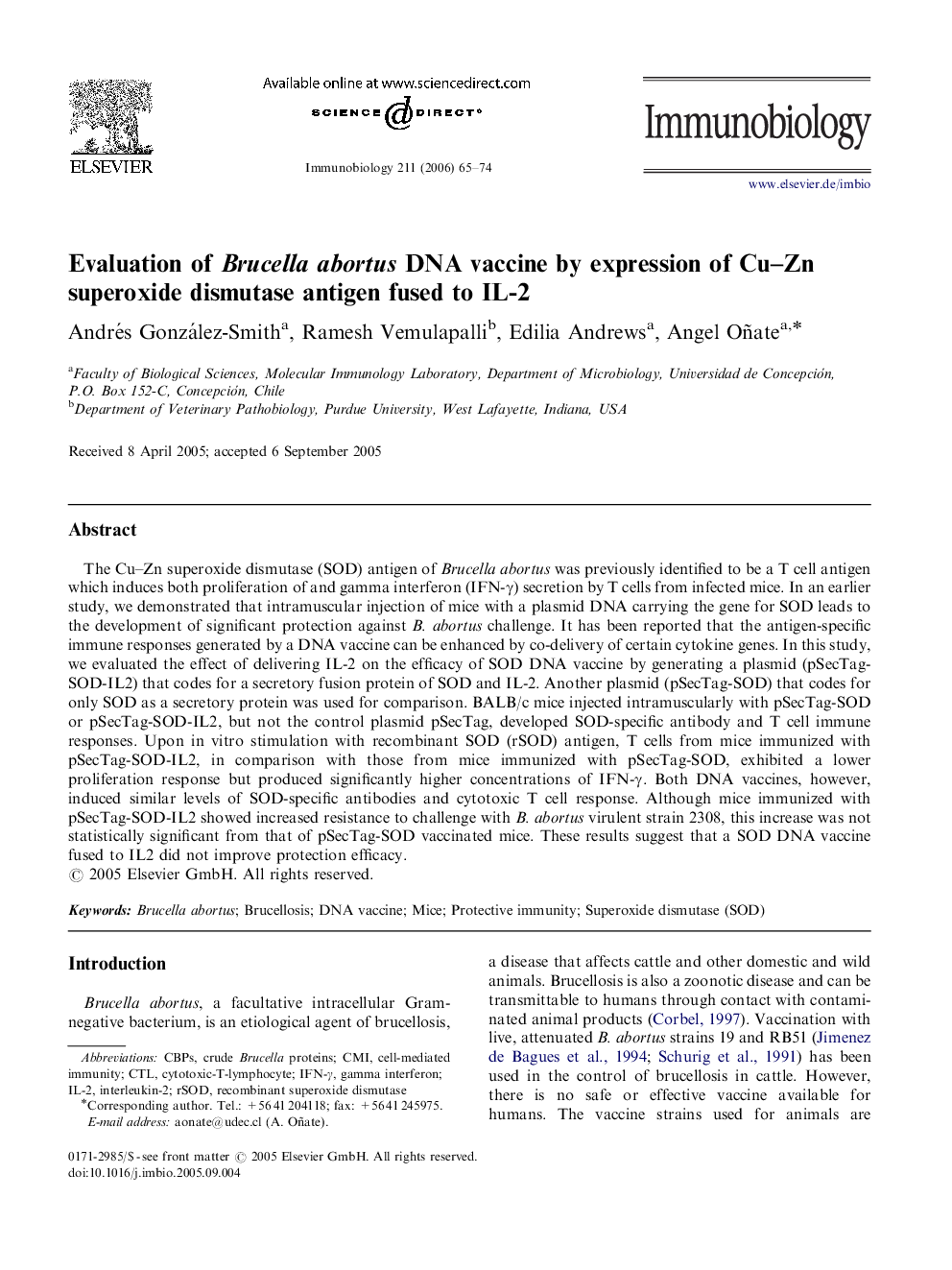| Article ID | Journal | Published Year | Pages | File Type |
|---|---|---|---|---|
| 2184050 | Immunobiology | 2006 | 10 Pages |
The Cu–Zn superoxide dismutase (SOD) antigen of Brucella abortus was previously identified to be a T cell antigen which induces both proliferation of and gamma interferon (IFN-γ) secretion by T cells from infected mice. In an earlier study, we demonstrated that intramuscular injection of mice with a plasmid DNA carrying the gene for SOD leads to the development of significant protection against B. abortus challenge. It has been reported that the antigen-specific immune responses generated by a DNA vaccine can be enhanced by co-delivery of certain cytokine genes. In this study, we evaluated the effect of delivering IL-2 on the efficacy of SOD DNA vaccine by generating a plasmid (pSecTag-SOD-IL2) that codes for a secretory fusion protein of SOD and IL-2. Another plasmid (pSecTag-SOD) that codes for only SOD as a secretory protein was used for comparison. BALB/c mice injected intramuscularly with pSecTag-SOD or pSecTag-SOD-IL2, but not the control plasmid pSecTag, developed SOD-specific antibody and T cell immune responses. Upon in vitro stimulation with recombinant SOD (rSOD) antigen, T cells from mice immunized with pSecTag-SOD-IL2, in comparison with those from mice immunized with pSecTag-SOD, exhibited a lower proliferation response but produced significantly higher concentrations of IFN-γ. Both DNA vaccines, however, induced similar levels of SOD-specific antibodies and cytotoxic T cell response. Although mice immunized with pSecTag-SOD-IL2 showed increased resistance to challenge with B. abortus virulent strain 2308, this increase was not statistically significant from that of pSecTag-SOD vaccinated mice. These results suggest that a SOD DNA vaccine fused to IL2 did not improve protection efficacy.
